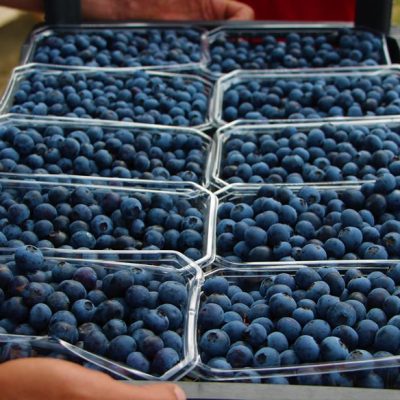Peruvian blueberry season has been slower, with higher volumes
Proarándanos has reported that the 2024-2025 Peruvian blueberry season, although progressing at a slower pace compared to previous seasons, is showing higher volumes.
To date, 254,406 tons of Peruvian blueberries have been exported, with 89% being conventional and 11% organic. Compared to the same date last season, this represents a growth of 61%, the entity stated.
Almost 30,000 tons of organic blueberries have been shipped worldwide, and it is projected that the season will end with nearly 40,000 tons. Unlike past seasons, when almost 100% of organic blueberries went to the United States, this year 89% is destined for the U.S., with 10% going to the European market.
The peak week of the 2024-2025 season occurred in week 42, during which 22,348 tons of fresh blueberries were exported. This contrasts with the peak of the 2023-2024 season, recorded in week 43, and week 38 for the 2022-2023 season.
The entity reported that 97% of the total volume exported has been shipped by sea. The main ports of arrival by destination are the Port of Philadelphia, with a 58% share of the volume exported to the United States; the Port of Rotterdam (Netherlands), with 72% of the volume exported to all of Europe (excluding Russia); the Port of Shenzhen, with 72% of the volume exported to China; the Port of Dover, with 44% of the volume exported to the United Kingdom; and the Port of Kaohsiung, with 18% of the volume exported to other destinations.
Regarding producing regions, the five main departments that contribute to exports are La Libertad with 49%, Lambayeque with 24%, Ica with 12%, Lima with 7%, and Ancash with 6%. Together they account for 98% of the total volume exported. The remaining 2% is divided between Piura, Moquegua and Arequipa.
Similarly, the top 5 most exported varieties are Ventura, Biloxi, Sekoya Pop, and Rocío, while the main exporting companies are Camposol, Agrovisión, Hortifrut, Beta, and Agrícola Cerro Prieto.
Certified hectares of Peruvian blueberries
In 2024, Peru had 20,195 hectares certified and inspected by SENASA.
The next 23% of the hectares are distributed among 12 varieties, with Fallcreek’s Atlasblue and Emerald standing out with 8% between them.
Continuing with the analysis of varieties per hectare of the current blueberry season, the companies that have contributed the most with their genetics are Fallcreek with 32% representation, followed by open varieties with 19%, Sekoya with 16%, Hortifrut with 9% and Driscolls with 8%. The remaining 16% is divided between Ozblu, Mbo, Inkasberries, Planasa, Florida University, and Iq Berries.
In 2016, the top varieties were Biloxi with 58%, followed by Rocio with 18%. It can be seen that those figures changed in 2020, whose top varieties were Biloxi with 38% and Ventura with 34%.
By 2024, the figure is totally different. Ventura and Biloxi represent 43% of the hectares, the latter decreasing by more than half. A new variety joins the market, Sekoya POP, with a 14% share.
In 2016, other varieties accounted for only 5%, while in 2024, that percentage grew to 37%.
How will the trend of the Peruvian blueberry season continue?
Proarándanos indicated that during the 2024-2025 season, shipments of fresh Peruvian blueberries will reach a total volume of 323,928 tons. This amount represents a variation of +4.1 % in relation to the October estimate (311,202 tons).
It should be noted that the Peruvian blueberry season is considered from May 2024 to April 2025.
13.12.2024
Source: Freshfruitportal.com






